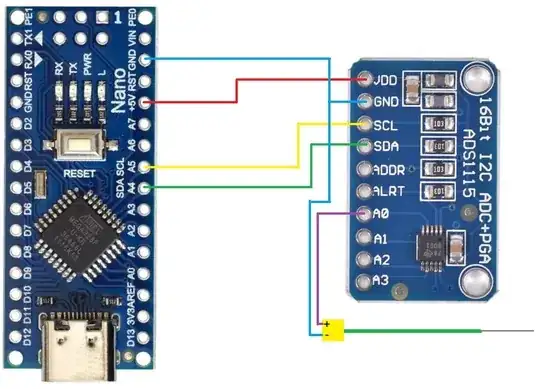I ordered a ADS1115 so I could measure temperature of a type K thermocouple, but I am not managing to get accurate readings. I had it working while having a normal A0 pin, but since the type K table shows pretty low voltages, the 0-1023 scale is not accurate.
When the thermocouple is at room temperature (around 22°c), it shows 00.0 millivolts on the multimeter (which I dont understand since it does not match with the table), and my program outputs a value of around -40 and a voltage of -0.005. When I heat it up until I measure 10.0 millivolts (around 250°c according table), the Arduino prints a value of 53 and a millivolts of 300.
What am I doing wrong? I suspect something with the calculation, but I am not able to find out how I should do it, I know very little about millivolts.
Can someone help me out what I am doing wrong here and what I should do?
I have the thermocouple and ADS1115 connected as shown in the image below.

The code I am using is as following
#include <Adafruit_ADS1X15.h>
const int analogFruitPin = 0;
Adafruit_ADS1115 ads;
void setup()
{
Serial.begin(9600);
ads.begin();
ads.setGain(GAIN_FOUR);
ads.setDataRate(RATE_ADS1115_860SPS);
}
void loop()
{
int sensorValue = ads.readADC_SingleEnded(analogFruitPin);
float voltage = sensorValue * (5.0 / 32768.0);
Serial.println(voltage,3);
Serial.println(sensorValue);
delay(500);
}